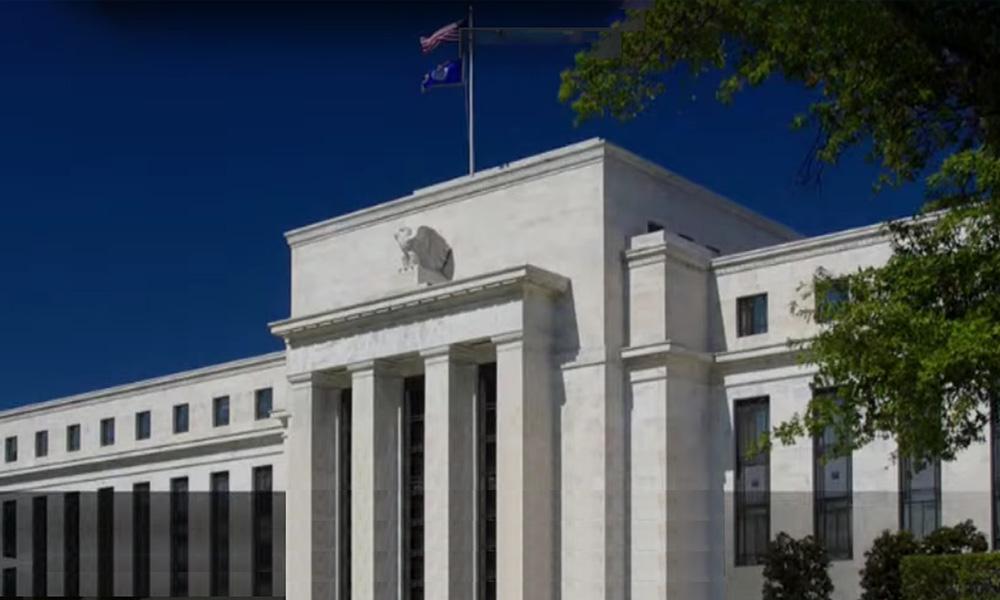Internal divisions within the Federal Reserve intensify: Bowman and Waller push for rate cuts, worried about a hidden crisis in the job market!
2025-08-04 08:49:13

Calls for a rate cut within the Federal Reserve: Concerns of Bowman and Waller
At last week's Federal Reserve policy meeting, the Federal Open Market Committee (FOMC) decided to maintain the benchmark interest rate at 4.25%-4.50%. However, this decision was not unanimous among all members. Fed Vice Chairman for Supervision Bowman and Governor Waller explicitly supported the rate cut, releasing a statement last Friday outlining their position. Both governors agreed that signs of weakness in the job market were emerging, necessitating more aggressive Fed action to prevent a further economic slowdown.
In her statement, Bowman noted that U.S. economic growth has slowed significantly this year, with signs of weakening labor market activity becoming increasingly apparent. She believes the current Federal Reserve policy stance is "mildly restrictive," and that maintaining high interest rates could exacerbate the risk of economic weakness. Bowman advocates gradually adjusting interest rates to a "neutral level"—one that neither stimulates nor suppresses the economy—to mitigate the possibility of further deterioration in the labor market. She emphasized that such adjustments are a "proactive" strategy that can provide a buffer for the economy and avoid a more severe recession.
Waller's views also directly address concerns about the job market. He stated that core inflation is already close to the Fed's 2% target, and that upward risks are limited, so there's no reason to wait for a significant deterioration in the job market before taking action. Waller warned that the job market is nearing a "stall," and the Fed's policy rate should move closer to neutral as soon as possible to avoid placing unnecessary pressure on the economy. He also criticized the current "wait-and-see" policy approach as overly cautious, arguing that this strategy could lead the Fed to react slowly to changing economic conditions and miss optimal opportunities for regulation.
Employment data confirms concerns: July non-farm payroll report disappoints
The two directors' concerns are well-founded. The latest July non-farm payroll report released by the U.S. Department of Labor provides data support for their views. The report shows that the U.S. added only 73,000 non-farm jobs in July, far below market expectations. Furthermore, job growth data for May and June were significantly revised downward, further highlighting the weakness in the labor market. The unemployment rate rose slightly by 0.1 percentage point to 4.2% in July, a subtle change that has further fueled market concerns about an economic slowdown.
Meanwhile, the Trump administration recently announced significant tariff increases on several trading partners. This decision not only exacerbated global trade tensions but also led to a significant decline in global stock markets. Investors and traders are reassessing their expectations for Federal Reserve interest rate cuts, with the Fed widely expected to begin its rate-cutting cycle in September. Kathy Bostjancic, chief economist at Nationwide, stated that the Fed may begin easing monetary policy in September, with a cumulative rate cut of 75 basis points expected by the end of the year. She believes the impact of tariffs on inflation will be a short-term, one-time adjustment, and that inflationary pressures will gradually subside over the long term.
Disagreement within the Fed: First time two chairs dissented since 1993
Bowman and Waller's dissenting opinion was a landmark event. According to statistics, this was the first time since late 1993 that two Federal Reserve Board members simultaneously dissented from an FOMC interest rate decision. This rare internal disagreement sparked widespread speculation about the Fed's policy direction. The two board members' public statements not only reflected their deep concerns about the job market but also hinted at significant disagreements within the Fed regarding its outlook for the economy.
However, not all Fed officials agree that the job market is in trouble. Cleveland Fed President Hammack expressed confidence in the FOMC's decision to maintain interest rates despite the "disappointing" July jobs data in an interview with Bloomberg Television. Hammack believes the current labor market remains largely balanced, with no signs of serious imbalances. She emphasized that the Fed needs to closely monitor future employment data while remaining vigilant against inflation, which remains above its 2% target. Hammack declined to disclose her position at the September 16-17 policy meeting, but she acknowledged that the Fed will face a "tough time" balancing its two main goals: employment and inflation.
Trump's external pressure and the independence of the Federal Reserve
Meanwhile, Trump's comments have added further complexity to the Fed's policy discussions. On August 1st, Trump again blasted Fed Chairman Powell on social media, calling him a "stubborn idiot" and calling for a significant interest rate cut. Trump has long pushed for lower borrowing costs to stimulate economic growth. However, this has been met with a lukewarm response from Fed insiders. Waller, who has previously stated that his decisions are not "political," is considered a leading candidate to succeed Powell as chair when his term ends in May 2026. Bowman, recently promoted by Trump to Vice Chair of Supervision, has a long history of hawkish monetary policy stances.
Michael Feroli, JPMorgan Chase's chief U.S. economist, half-jokingly remarked that Bowman and Waller's dissenting votes resembled "job applications," suggesting they might be paving the way for higher positions in the future. However, he also noted that these dissenting votes were not enough to change the Fed's overall policy direction. Other Fed policymakers supported keeping interest rates unchanged at Wednesday's meeting, primarily due to their wariness of inflationary pressures potentially triggered by Trump's tariff policies.
Powell's response and future outlook
Federal Reserve Chairman Jerome Powell defended the current policy stance at a press conference following last week's meeting. He stated that the US economy is currently "robust" and that the Fed has ample room to further observe economic trends and the balance of risks before adjusting policy. Powell was open to internal dissent, calling it a "good meeting" and emphasizing that the expression of different opinions contributes to transparency and diversity in policymaking.
Despite this, market expectations for the Fed's future moves are shifting. Investors generally expect the Fed to begin cutting interest rates in September to address the economic slowdown and potential risks in the job market. However, inflationary pressures stemming from tariff policies may lead the Fed to be cautious about the pace of rate cuts. In the coming months, the Fed will need to strike a balance between inflation and employment.
Summary: The Fed stands at a crossroads
Internal divisions within the Federal Reserve, weak employment data, and the Trump administration's tariff policies have combined to cast a shadow of uncertainty over future monetary policy. Bowman and Waller's calls for a rate cut reflect deep concerns about the deteriorating job market, while Hammack's cautious stance reveals differing assessments of the economic situation within the Fed. Faced with external pressure from Trump and global economic uncertainty, the Fed needs to strike a balance between inflation and employment. The September policy meeting will be a critical juncture, with the Fed's decisions expected to have profound implications for the US and global economies.
- Risk Warning and Disclaimer
- The market involves risk, and trading may not be suitable for all investors. This article is for reference only and does not constitute personal investment advice, nor does it take into account certain users’ specific investment objectives, financial situation, or other needs. Any investment decisions made based on this information are at your own risk.





















